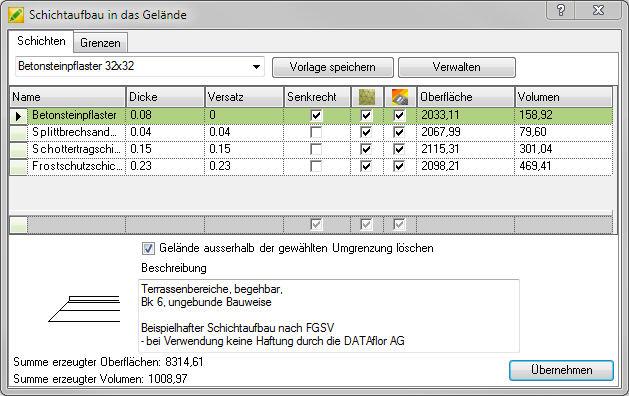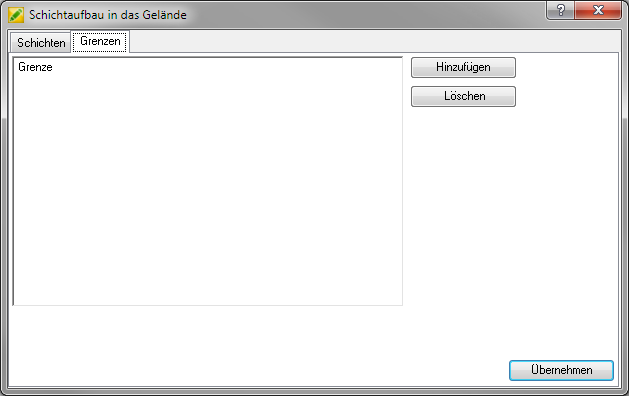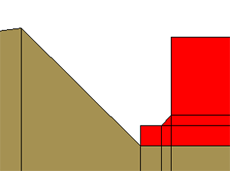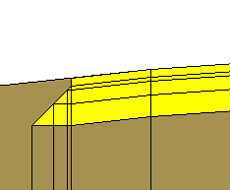Table of Contents
Layer structure
Description
You can use this function to create new layers for the selected triangulation, which are required, for example, when building paths and terraces.
A distinction is made between two situations:
Application
- Select the desired triangulation in the DTM tree and call it with the right mouse button Triangulation> layer structure on and choose whether the layer structure on the site or in the area should be created.
- Now either select a closed boundary, if the layer structure is only to be applied to an area within the triangulation, or confirm the selection with Enter or the right mouse button to apply the layer structure to the complete triangulation.
- In dialogue Layer structure you can either select an existing layer structure or create a new layer structure.
- To create a new layer, click in the dark gray area in the table below. Enter the Namur, the Thickness and Offset at, define whether the edge of the layer perpendicular or should run with a slope and select whether a triangulation or a difference body should be calculated for the layers. To change the columns, press the key Tab.
- On the tab boundaries you can define areas that should be left out if necessary.
- With Enter confirm the information. The dialog is closed and the Quick DGM new entries are created for the layer structure (triangulations in the specified number and the corresponding difference bodies).
Features
Shifts tab

In the upper area of the dialog you can select an existing layer structure from the list or enter a new name for your layer structure in the field. With the button [Save Template] you can save your changes. The button [Manage] opens a dialog for managing existing layer structures, in which you can enter the existing layer structures delete or make copies.
The next area shows the individual layers with their settings:
With a click with the right mouse button on the beginning of the respective shifts, the order can be adjusted or shifts that are not required can be deleted.
Is the option Terrain outside the selected boundary delete activated, then only the terrain within the boundary is calculated as layers. If the option is deactivated, the terrain outside the boundary is also used for the calculation.
In the lower left area, a Preview the layer structure shown. The preview can also be inserted into the drawing as a scheme. Right-click on the layer structure in the Quick DTM and choose Scheduling. You can then insert the scheme into the drawing with the mouse.
The sums of the surfaces and the volumes are displayed below the preview.
The sums of the triangulations and volumes as well as the individual values for surface and volume in the table are only displayed if the dialog is opened via the tree in Quick DGM (Quick DTM> Info) is called.
In the field Description you can store further information about the layer structure.
Borders tab
In order to cut out areas from the layer structure (e.g. building edges), you can use the boundaries closed objects can be defined as boundaries.

With the button [Add] you can capture existing, closed drawing objects as boundaries or boundaries with the right mouse button using the options contour (for existing, not closed objects) or To draw (for new, closed polygons).
With the button [Delete] limits that are no longer required can be removed from the list.


